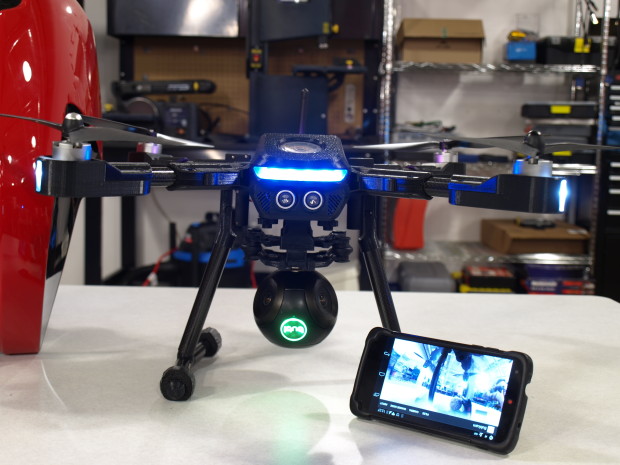Liz Wald, Indiegogo‘s VP of Technology & Design, ponders whether we are getting closer to “to the holy grail of ‘mass customization’.”
A drone landed at the White House last week shocking the Secret Service, but it should not shock you. This wasn’t the act of a terrorist or even a prankster, this was simply a regular person who purchased something like PlexiDrone or Ghost Drone and lost control of the navigation. The media is all in a tizzy, but this isn’t all that far off from knocking a baseball through the neighbor’s window and running home to hide (to be fair, baseballs generally can’t transport cameras or explosives).

How is it that we can now have rogue drones buzzing the White House? This can be explained in part by a great article a colleague shared with our team last week called A Movement in the Making: What makes “making”—the next generation of inventing and do-it-yourself—worth paying attention to? The authors do a great job of talking about the shifts in both the demand curve (more makers who create things people want) and the supply curve (increasing access to low-cost manufacturing in China and access to capital via platforms like Indiegogo). All this is true, and the sheer reach of the Internet is giving people access to markets and ideas that would never have been possible a generation ago.
I’ve been in the Internet space since AOL was mailing us CD-ROMs inside magazines, and spent time at Etsy when it was less than $100M/year in revenue (today it’s approaching $2B), and while access on the supply or demand side are certainly driving forces behind the “mainstreaming” of technology, I think the real shift comes from the fact that we are getting much closer to the holy grail of “mass customization” companies have sought for decades.
Until now when it came to “mass” everyone focused on the demand—how can a few big suppliers with the most resources customize for individuals. In reality, it was all about shifting the mass away from a few suppliers to an infinite number. Today, the demand side also provides supply! For example, when seeking lodging we no longer choose from a handful of platform classes (Ritz, Sheraton, Holiday Inn, Motel 6, camp ground), but have nearly limitless choices on AirBnB—provided by the same people who consume the service when they need a place to stay. The same is happening in transportation with Uber, and finance with Indiegogo.
In the world of physical products, makers are realizing they can do something similar. While they can’t always offer every possible customization, they can build apps to let you use the device exactly the way you want, and are increasingly putting technology into the objects you are used to using rather than making you adapt your behavior to use a new type of object.
For example, SmartMat, realized that when people do yoga, even in a class, they can’t always get the instruction they need to get the “perfect pose.” Rather than try to get people to wear a bunch of sensors on different parts of their body so that people could be “told” when they were out of alignment, they decided to change the mat that people were already using. In this way there’s no different behavior needed as the mat looks and feels like a standard yoga mat. There are no additional devices to wear and you can take the instruction in real time or review it later.
As technology is increasingly part of our daily routines we will see more and more things adapt to the way we use them in the mainstream, like Cool Tool Boxes, and it won’t feel like we ever did it another way. In the interim, prepare for more drones on more lawns.
One Response
You must be logged in to post a comment.



https://www.indiegogo.com/projects/help-a-local-handyman